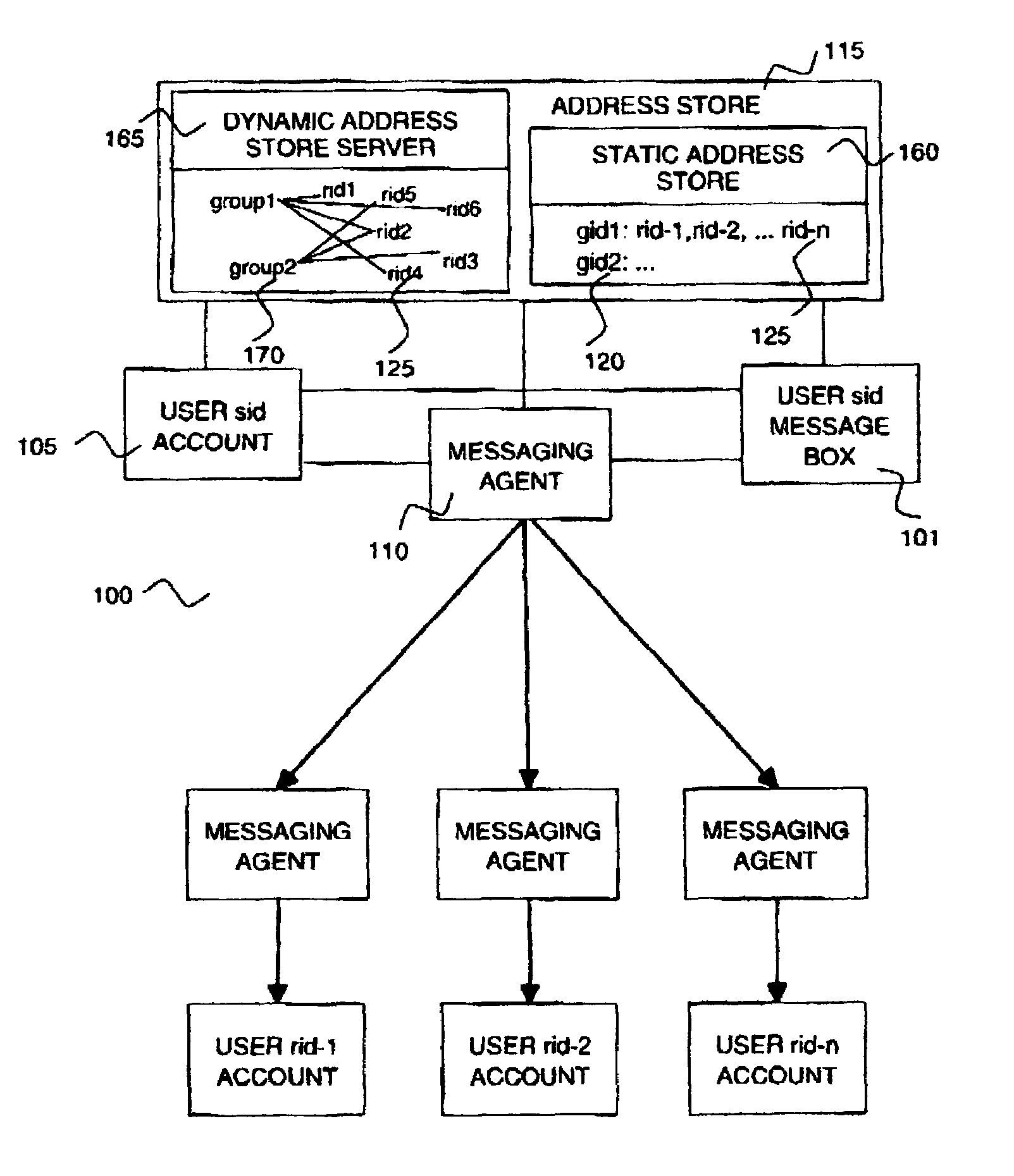Method and apparatus for anonymous group messaging in a distributed messaging system
a distributed messaging and group messaging technology, applied in the field of anonymous group messaging, can solve the problems of not being able to provide relevant feedback to all appropriate parties, cumbersome prior art messaging format, and disadvantages of all three group messaging approaches, and achieve the effect of facilitating easy understanding of the present invention
- Summary
- Abstract
- Description
- Claims
- Application Information
AI Technical Summary
Benefits of technology
Problems solved by technology
Method used
Image
Examples
Embodiment Construction
[0040]The present invention provides a method and apparatus that enable members of a predefined group to receive a message destined to the group ID and to exchange messages with group members, without disclosing identities of the group members. The invention further provides continued reply exchanges as a message thread wherein the anonymity of the group members continued to be kept anonymous.
[0041]Prior art methods would resolve member identities at the sending party to send individual messages, with each group member as the destination of each individual message. Other methods utilize a global group identity in the message headers for anonymous group messaging. In contrast, the method provided by the present invention preserves in the message header the group name or identity which has the naming scope, the semantic context, and the management domain local to the group owner. Unlike the prior art mailing list methods, the inventive methods maintain the relationship of the group to...
PUM
 Login to View More
Login to View More Abstract
Description
Claims
Application Information
 Login to View More
Login to View More - R&D
- Intellectual Property
- Life Sciences
- Materials
- Tech Scout
- Unparalleled Data Quality
- Higher Quality Content
- 60% Fewer Hallucinations
Browse by: Latest US Patents, China's latest patents, Technical Efficacy Thesaurus, Application Domain, Technology Topic, Popular Technical Reports.
© 2025 PatSnap. All rights reserved.Legal|Privacy policy|Modern Slavery Act Transparency Statement|Sitemap|About US| Contact US: help@patsnap.com



